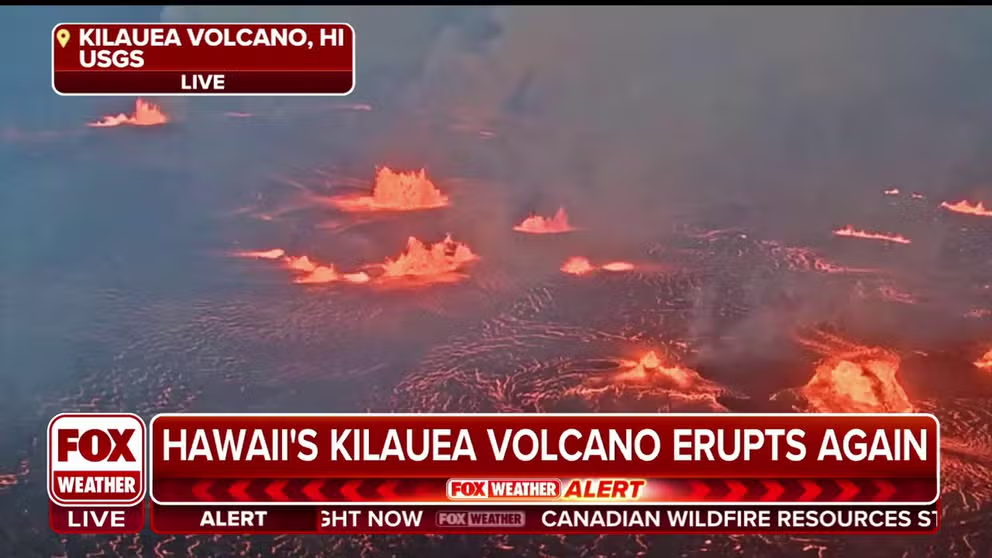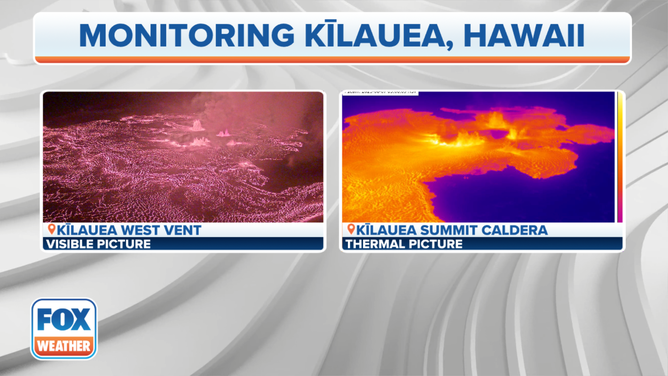Hawaii's Kilauea volcano begins erupting again
Live web cameras at the Halemaʻumaʻu crater on the south rim show lots of activity, including an active lava lake with geysers of lava.
Hawaii's Kilauea volcano begins erupting again
Hawaii's Kilauea volcano started erupting again on Wednesday for the second time this year. Hawaii Volcano Observatory video shows lava activity from the volcano's Halema’uma’u crater in Kilauea’s summit caldera.
HAWAII VOLCANOES NATIONAL PARK – Hawaii’s Kilauea volcano started to erupt early Wednesday morning for the second time this year, according to an alert released by the Hawaiian Volcano Observatory.
According to the HVO, Kilauea began to erupt at about 4:44 a.m. HST, with a sea of lava visible from remote cameras.
HOW TO WATCH HAWAII'S KILAUEA VOLCANO ERUPTION
The HVO said it detected a glow in Kilauea summit webcam images, which indicated that an eruption commenced within Halema’uma’u crater in Kilauea’s summit caldera within Hawaii Volcanoes National Park.
The USGS HVO elevated Kilauea’s volcano alert levels from watch to warning, and its aviation color code from orange to red as the eruption and associated hazards were elevated, according to the HVO.
There is no indication that any nearby populations are threatened by the volcano, but the local National Weather Service office warned that small pieces of ash were possible in the Puna, Kau and South Kona districts.
The volcano will also produce vog – "volcanic smog" - which is the result of when sulfur dioxide from the eruption mixes with the atmosphere. Vog has been observed downwind of Kilauea along the western shores of the Big Island and can present air quality hazards for those in the area.
Live web cameras at the Halemaʻumaʻu crater on the south rim show lots of activity, including an active lava lake with geysers of lava.
The eruption is happening in an area closed to the public and confined within the park. The HVO will continue to monitor the situation as the eruption continues.
Kilauea last erupted in January. The activity continued until March 7. According to the HVO, the eruption was brief compared to the previous two eruptions which lasted about three months.
How to watch Kilauea erupt live
The U.S. Geological Survey's Hawaii Volcano Observatory has more than a dozen cameras livestreaming activity from different areas of Kilauea. The cameras operate 24 hours a day, even overnight.
The summit webcams show thermal imaging of the heat, including the lava lake.
The most active camera above on the USGS YouTube page shows the ongoing eruption at Halemaʻumaʻu crater.




